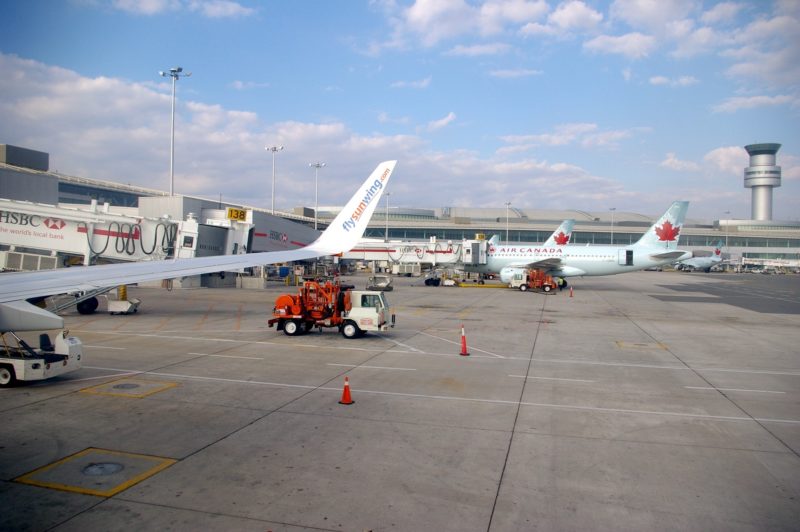Airports
Comparing Airport Sweeper Equipment
How do I choose the right airport sweeping equipment?
Properly evaluating and understanding the specific challenges facing your facility is critical to choosing the right solution. This is because there is no “one size fits all” single best technology for sweeping foreign object debris (FOD) from broad airport surface areas such as runways, taxiways, ramps and aprons, in all circumstances.
That is to say that every type of sweeper design has strengths — and weaknesses — depending upon the type of FOD, surface, or overall environment that it encounters.
Suggested Resources
Check out our articles on how to prevent FOD at your airport or how to set up a FOD Program at your airline for more great ideas.
So, instead of looking for the best airport sweeping equipment available, focus instead on acquiring the most appropriate solution for your specific FOD control program.
A high-traffic military airfield in a windy, arid climate with a 24-hour operations schedule and a large force of available manpower will have needs and resources very different from a mid-traffic municipal airport in a temperate climate near a wildlife refuge with a 12-hour operations schedule and limited manpower.
When comparing airport sweepers, questions to ask include:
- What is the most critical type and size of FOD that may be found in the sweeping area?
- What kind of environmental FOD is present, such as dust, mud or leaves?
- Is the sweeping surface smooth or coarse?
- Are there subsurface areas, such as joints, cracks and tie-downs?
- What is your annual budget for equipment purchases and maintenance?
- How many personnel can you assign to FOD control duty?

For complex environments, such as a large facility with smooth runways bordering chipseal ramps with numerous tie downs and hangar cracks, it may be necessary to utilize two or more different sweepers to assure complete coverage.
Take into account how your facility’s other, non-sweeper FOD control measures affect the type of sweeper you need. For instance, the presence or absence of a fence or wall near a construction site can affect the amount of FOD that accumulates in downwind areas.
Comparing Airport Sweepers
Friction Mat Sweepers
Recommended for facilities concerned with small surface FOD (including debris in shallow grooves and joints), especially in safety critical or remote locations. Our FOD-Razor® is an example of a friction mat sweeper.
HOW IT WORKS: A vehicle tows the large, sweeping mat across paved surfaces where a series of narrow panels covered with nylon bristles latch onto debris, pulling the debris underneath the panels as the sweeper moves. I like plinko Kinetic energy is then imparted into this debris causing it to be deflected up and into a series of durable plastic scoops, where it collects for later disposal. Click here to view our FOD-Razor® video.
Pros:
- Captures small surface FOD more efficiently than any other sweeper.
- Lightweight and portable, it can be transported via pickup truck or helicopter.
- Low maintenance costs, because mat has no moving parts.
Cons:
- Does not efficiently collect subsurface FOD, such as in hangar cracks.
- Cannot collect certain types of large FOD, such as soda cans
- Mat can be unstable in windy conditions 40+ MPH.
Mechanical Sweepers
Recommended for sweeping surface and subsurface FOD simultaneously.
HOW IT WORKS: A spinning broom sweeps debris into a collection hopper. In some units, additional side brooms help to direct debris into the path of the main broom.
Pros:
- Can reach cracks and joints, especially if bristle height is adjustable.
- Can sweep road millings and heavy materials.
- As an older technology, it is widely available on the market.
Cons:
- Can generates dust during sweeping.
- Bristles can break off and become FOD
- In some cases, maintenance issues due to the large number of moving parts*.
*Our TracSweep® mechanical runway sweeper is built mostly from standard off-the-shelf parts available from most hardware suppliers, making the availability and cost of replacement parts highly affordable.
Vacuum Sweepers
Recommended for sweeping uneven surfaces, especially in dusty environments.
HOW IT WORKS: An air nozzle suctions FOD off the pavement and into a hopper. In some units, side brooms help to direct debris into the path of the nozzle.
Pros:
- Can collect FOD from uneven surfaces and as potholes.
- Generates less dust than mechanical sweepers.
- Fewer moving parts than mechanical sweepers.
Cons:
- Ability to collect large FOD may be limited by a narrow diameter suction nozzle.
- Can release small debris or air particulates back into atmosphere via exhaust.
- Side broom can embed debris into cracks and joints outside of the nozzle’s range.
Our CrackSweep™ and RampVac™ walk behind vacuums are transportable and ideal for operating in and around busy operating areas.
Regenerative Air Sweepers
Recommended for sweeping even surfaces efficiently in an environmentally friendly manner.
HOW IT WORKS: Similar to vacuum sweepers, regenerative air sweepers replace the side brooms with air blasts. After sucking in air and debris through the nozzle, it recirculates the suctioned air by “blasting” it back onto the pavement, pushing debris toward the nozzle, then sucking it in again.
Pros:
- Sweeps a broader path than vacuum sweepers.
- Wider nozzle can collect larger FOD than vacuum sweepers.
- Environmentally friendly; collects smaller and exhausts fewer particulates.
Cons:
- Wider nozzle has lower suction power; less effective for heavier or recessed FOD.
- Not effective on uneven surfaces or potholes
Magnetic Sweepers
Recommended for areas where ferrous metal FOD is a common or critical safety issue. We offer our powerful PowerBar™ Magnetic Sweepers in several different configurations and sizes.
HOW IT WORKS: This specialty sweeper consists of an assembly of industrial magnets encased in a protective metal housing. Using attached hooks and/or hangers, it is installed underneath a motor (or other wheeled) vehicle. As the vehicle passes over a surface, the magnets collect nuts, bolts, scraps and other small ferrous metal objects.
Pros:
- Powerful magnets are very efficient at collecting ferrous metal objects.
- The vehicle to which it is attached collects FOD while performing other duties, such as security patrols or forklift operations.
- No moving parts, fuel or other maintenance requirements.
Cons:
- Does not collect non-ferrous metal or non-metallic debris.
- Air safety regulations might prohibit delivering or transporting it via air freight.
- Can be damaged if banged too hard against parking barriers or other obstacles. (Some models include a protective sleeve designed to prevent impact damage.)

